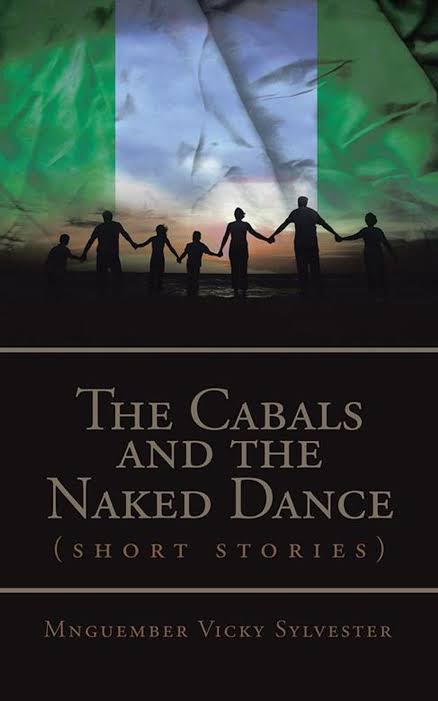A LINGUISTIC ANALYSIS OF MNGUEMBER VICKY SYLVESTER’S ‘HOSPITALITY’
By Adelana Esther
National Theatre, Igamu, Lagos.
Abstract
This essay analyses of the language applied by Prof. Mnguember Vicky Sylvester, in her short story, “Hospitality”. The first chapter provides a general background to the study as it among others defines the term, specifies the purpose of the study and the research method employed.
The second chapter reviews some relevant literature related to the study. It also gives a synopsis of the short story, presenting its thematic preoccupation and a short biography on its author alongside.
The third chapter discusses the linguistic feature employed in the text. The discussion was focused on the graphological and phonological aspect of the text, considering the use of elipses, capitalization, question mark and rhythmic effect etc. The chapter also discusses the syntactic features and semantics features employed in the text.
The fourth chapter summarizes the study and finally draws a conclusion that linguistic study cannot be divorced from literary text.
Keywords: Linguistic analysis, morphological, phonological, graphological, semantics, syntax etc.
Introduction
According to Sapir (1921) language is purely human and non-instinctive method of communicating ideas, emotions and desires by means of a system of voluntarily produced symbols. These symbols are voluntarily produced and they can be spoken or written. In this essay, we take a look at Vicky Sylvester’s short story “Hospitality” which is a graphic representation of language.
As a text, it communicates the ideas, emotions and intensions of the writer by means of symbols whose substance, form and context are discovered through linguistic analysis.
There are different levels of linguistic analysis. Robert Hall recommends three levels. These are; Phonology (Phonemics and phonetics), morphology and syntax. R.H Robins also describes the three levels of linguistic analysis as; phonology, grammar and semantics. Hockett advocates five levels which he calls sub-systems, of which three are central and two are peripherals. The central systems are;
- The grammatical system
- The phonological system
- The morphophonemic system
The two peripherals subsystems are;
- The semantic system
- The phonetic system
Paul Simpson in his book, Stylistics: A Resource Book for Students also specifies the levels of linguistic analysis as;
- Phonetic Analysis
- Graphological Analysis
- Syntactic Analysis
- Semantic Analysis
- Lexical Analysis
- Pragmatic Analysis
The study examines these linguistic features in the text, with an exception of the pragmatic analysis. Since a text is not independent of the features of language and a product of combined linguistic systems, the study enables us to know the various substance, forms and context that makes up the text, “Hospitality”.
Literature Review
The understanding of the different levels of linguistic analysis is imperative in the analysis of the short story, “Hospitality”.
Pushpinder Syal and D.V Jindal (2007) commenting on Linguistic analysis said; ‘In studying language which is the subject matter of linguistics, we mark or sub-divide the area in order to study it in an analytical and systemic way’. In other words, the hierarchical structure of language is considered in its analysis. Each language level is a system in its own right. Each can be analysed independently. This means that we can study phonology on its own and syntax on its own. Although, these levels are related in scope but one is higher than the other and the higher level includes the lower, still each level is independent because it has its own rules of operation that can be operated, described, analysed and understood. The major levels of linguistic analysis, with its corresponding level of structure are represented below:
Levels of Analysis Levels of Structure
Phonetics and Phonology Sounds
Morphology Word Formation
Syntax Sentence Formation
Semantics Meanings
Discourse Connected sentences
Linguists differ in their views on what precisely is the scope of linguistics. Some consider linguistics to be confined to the micro linguistics perspectives, others take a broader or macro linguistics view which include; sociolinguistics, psycholinguistics, ethno linguistics, anthropological linguistics etc. This study focuses on the micro linguistic analysis of Mnguember Vicky Sylvester’s “Hospitality”.
Theoretical Framework
The theoretical framework propounded by Leech (1969) and Short (1981) is used in the analysis, “Hospitality”; A short story in Vicky Mnguember Slyvester’s collection of short stories, titled, ‘The Cabals and the Naked Dance’, published in 2015. The theoritical framework used for the analysis of the short story is derived from both linguistic and literature and places a strong emphasis on linguistic aspects. The framework proposes four levels. These levels are; realization, form, substance and ancillary branches. This study focuses on three levels, that is, realization, form and substance.
The level of Realization
This level deals with ‘how to pronounce and write forms of language’ (Leech 1939:39), i.e Phonology and graphology. Graphology is made more explicit in Leech and Short (1981:131). The author state:
“Graphological variation is a relatively minor and superficial
part of style…Concerning such matters as spelling, capitalization
hyphenation, italization and paragraphing”.
Phonology, on the other hand, deals with how forms are realized and therefore entails an analysis of phonological aspects such as the use of alliteration, rhythm, stress, tone and assonance etc.
In Leech’s (1969:39) view, implicit phonology is determined by choices of words and structures at the synthetic levels. He sees phonology and graphology as being in an ‘either – or’ relationship because ‘English graphology initiates phonology’.
The Level of Form
This level deals with the study of vocabulary in language and ‘how items of the vocabulary are to be used in constructing sentences’ (Leech 1969:37). This is the synthetic level as it comprises both the lexicon and structure. At this level of analysis, the writer’s choice of vocabulary as well as syntactic structures used has been undertaken. More specifically, as far as the lexicon is concerned, the investigation has centered on neologism and indigenous words. The analysis of the structure has entailed an analysis of the sentences in terms of their typology. In addition the structure of the noun phrase in the short story has been examined.
The Semantic Level
At this level the focus is on the realization of meaning in a work. This could be either at the cognitive or denotative level. Indangasi (1988:94) shed more light on this by identifying different types of semantic deviation namely, semantic redundancy, semantic absurdity and semantic ambiguity. Under semantic redundancy, he identifies devices such as pleonasm, tautology, and periphrasis. The use of oxymoron and paradox are identified as aspects of semantic absurdity. This study analysis the linguistic features inherent in Mnguember Vicky Slyvester’s “Hospitality” considering these levels.
Phonological Features in Mnguember Vicky Sylvester’s “Hospitality”.
Richard (1993) opines that ‘rhythm and its specialized form, meter depend upon repetition and expectancy. Equally, where what is expected recurs and where it fails, all rhythmical and metrical effects springs from anticipation’. It is with this concept in mind that the analysis of rhythm is actualized in the text. Mnguember had employed phonological parallelism and alliteration in order to realize rhythm in the short story.
The examples below illustrated this;
Example 1
“Tourist milled by, smoking, chewing or drinking,
some alone, some with children, some old men with
small Asian girls hanging on their arms”
The repetitive patterns prevalent in the above text are;
- Words that ends with ‘…ing’, such as smoking, chewing, and hanging. The repetition of these words creates a sound effect in the text. The words that ends with’…ing’ when transcribed is // a velar nasal consonant sound.
- The repetition of ‘some’ in the passage as in ‘…some alone’, ‘…some with children and some old men…’, also created a steady rhythmic beat in the story. ‘Some’ is transcribed as /sΛm/, it is made of three phonemes, /s/, /Λ/ and /m/.
/s/ is an alveolar fricative sound.
/Λ/ is a central vowel sound produced with spread lips.
/m/ is a biliabial nasal consonant sound.
Example 2
Alliterated sounds contribute to the story’s sound effect. The following are the alliterated sound in the short story.
- Till the taste was off her teeth and tongue. (The consonant sound /t/ is alliterated)
- Boys had become bad boys. (The sound /b/ is alliterated).
- Police stations and public places. (The sound /p/ is alliterated).
- Shopping or simply sight-seeing. (The sound /s/ is alliterated in simply sight-seeing).
- Some old men with small Asian girls. (The sound /s/ is alliterated).
Graphological Features in Mnguember Vicky Sylvester’s “Hospitality”.
The graphological features evident in the short story are; The use of ellipsis, capitalization, question marks and paragraphing.
The Use of Ellipsis
The author preponderantly uses ellipsis in the short story. Ordinarily ellipsis is used to mark a pause, thought or a point of interjection in a discourse situation. These ordinary uses of ellipsis will not be our concern. Instead we shall focus on the creative use of the feature.
Mnguember uses ellipsis to fill up a missing part of a conversation of participating members. When for example one of the four Nigerians narrates his ordeal on the failure of business to Ene, he ended his conversation elliptically.
‘I know, it is one of my friends…..
‘Mmm?
He told her things about me
Yes, in fact when I call my friends now, they avoid
talking to me about her’. (Page 70)
In the text above, the ‘mmm’ that follows suggests that Ene understands what the Nigerian man was saying.
Another instance where ellipsis was used in the shirt story is seen in the extract below;
“‘No you’re warm. I like your voice…’
He was not sure of what to say.” (page 60)
In the text above, ellipsis was employed to show a pause that reflects uncertainty in the conversation process. Blackwater was not sure of what to say after he admitted that he likes Ene on their first meeting.
The Use of Capitalization
Mnguember uses capitalization to emphasize ideas and draw the readers’ attention to something in the short story. This feature creates a shouting voice in the mind of the reader. It was used at the beginning of sentences or paragraphs to show a flow of thought. For example, the capitalization of ‘I’ in ‘I watched the crowd…’ (page), draws the readers’ attention to the subject, that follows the verb ‘watched’.
The Use of Question Mark
There were numerous cases were question mark was used in the text. The author uses it to convey more information about an event or a person. For instance, in the text, Ene’s question; ‘Who are Malays here?’ helps the reader denote that Ene, a Nigerian is currently not in Nigeria but in Malaysia and she seeks to know the Malaysians among the crowd. Also in the conversation between Ene and Blackwater, the author employed questioning technique to inform the reader that Ene is not married, works in a consulting firm and plans to spend two weeks holidaying in Malaysia.
The Use of Paragraphs
Mnguember uses paragraphs to show the flow of thoughts, transition of time, place and action. Below is an extract from the short story shows how this is employed.
‘…tomorrow then. He walked her to the reception of her hotel
and wished her a good night but did not leave until she was
in the lift.
The Senegalese experience was different from the Bintang
high street coffee shop where she watched the dual deck houses
called London buses back home’ (Page 64).
From the text above, the author uses paragraphs to show the time transition. The event in the first paragraph happened in the evening. Meanwhile, the event in the second paragraph happened the next day, in the morning. Paragraphs were also used to reveal a shift of focus in action. In the first paragraph, one would see that Ene was returning back to her hotel escorted by Blackwater. However, in the last paragraph, she is enjoying the view of the dual deck houses or London buses as it is called in Nigeria.
Syntactic Features of Style in Mnguember Vicky Sylvester’s “Hospitality”.
In analyzing the synthetic aspect of the linguistic form in the short story, attention must be paid to the lexicon, sentence type and structure. The strategies employed, that makes the story cohere would also be analysed under cohesion, in synthetic analysis.
The Lexicon
One of the things that marks Mnguember’s lexicon is her use of pidgin English in the short story. Many of these words were graphologically highlighted with quotation marks. Some of these words are; ‘comin now’, ‘but you n eat’, ‘Ah gud’, ‘tank you’ and ‘see de way dis people jus wake up and make new laws’.
The meaning of these words is easily understood by the reader in context. Another distinguishing marker of Mnguember’s lexicon is her use of ordinary English words or what Indangasi (1988) calls ‘small words’ as opposed to ‘big words’. These words make the reading of the short story easy. One unusual word that stands out in the entire collection is ‘unsmiling’. This is seen in the passage below;
‘The girls rarely smiled. I envied their straight kept faces
happy yet unsmiling’. (Page 60)
The Sentence Types and Structures
- Antithetical Structures
In the discussion of graphological effect, it was observed that the author uses pattern repetition to create rhythm. These repeated patterns were not only used to create rhythm but to create antithetical sentence structure in the text. Mnguember employs antithetical structures in the sentences that begin with ‘some’. E.g ‘Some alone, some with children and some old men hanging on their arms’. (Page 60)
This is employed to describe the activities the tourist (men especially), engaged in, in Malaysia.
- Parallel Structure
Lavin L (1966), asserted that ‘sentence elements are said to be parallel when thy have similar form’. The best example of this type of sentence is seen in the extract below:
‘There are Chinese, and Indians here who are Malays.
There is a mixture, kind of, not the extreme slant to
the eye. It’s not easy to tell with the men because
they wear the same western clothes, but the Muslim women
have those small headties.
That’s all that distinguishes them.
They are not fanatical…they can’t afford to dwell on
Differences like what’s ruining fortunate countries like Nigeria.’ (Page 59)
The similarity of form here is both at the level of sentence length, as well as sentence structure. There is a conscious shift from long to short sentences. Secondly, the forms of the shorter sentences are strikingly similar. For example;
‘There are Chinese and Indians
here who are Malays.
There is a mixture, kind of,
Not the extreme slant to
the eye.
They are not fanatical…they
Can’t afford to dwell on differences…’ (Page 59)
The author’s usage of parallel structure is for emphasis sake. She emphasizes the nationality of the people living in Malaysia and their ability to coexist despite the differences in their religious belief.
- Fragmented Sentences
Mnguember breaks away from the structurally unmarked sentences in language to fragmented ones, to create a purposeful change. For example, she uses fragmented sentence to capture Ene’s amazement at the hungry sate of the boys at the University of Malaysia. The fragmented sentences are seen in the extract below;
‘Almost a week now. Will leave next week.
I was at the University two days ago to
See some boys whose parents sent messages to.
I am surprised they sent so many things
And all those things are here.
One even sent Cabin biscuit
And food is so cheap here,
see everywhere people are eating.
I couldn’t eat the first two days I was here.
And one of the boys said he was eating only once a day’.
(Page 72)
The sentences used in the short story are simple and short.
- Cohesion
Mnguember employed some strategies to make her work cohere. These strategies are;
- Anaphoric sentence or reference
- The use of Ellipsis
- Anaphoric Reference
Horrock (1987) said anaphors are NPS (Noun Phrases) whose reference necessarily determined sentence internally and which cannot have independent reference’. An anaphoric study in is study is therefore a pronoun that is preceded by noun that refers to. This is the more ordinary cohesive device that Mnguember used in her story. Example of this strategy is found in the following passage;
‘Blackwater came back with the tea on a tray and set
It in front of Ene.
What’s the matter?
You look like you’ve seen some ghosts! He exclaimed
She had no idea the thoughts of that Islands would get her so upset
And felt like she could kill someone’.
(Page 66)
What makes this passage to cohere is the fact that in the main clause of the first sentence, the characters in question are identified by name. i. e Blackwater and Ene. So, when in the following clause, reference is made by use of pronouns ‘he’ and ‘she’. These pronouns refer to Blackwater and Ene. This makes the text to cohere, because cohesion as Halliday and Hassan (1974) observes, occurs ‘…where the interpretation of some element in the discourse of some element in the discourse is dependent on that of another, this one presupposes, the other in the sense that it cannot be effectively decoded except by recourse to it’. The interpretation of ‘he’ and ‘she’ therefore can only be achieved by recourse to both Blackwater and Ene.
- The Use of Elipsis
This is actually a cohesive device as Wright (1996) confirms by stating that ‘elipsis is a cohesive device involving the absence of an item which the reader or listener has to supply. The cohesive link is set up by the process of referring back to recover the missing item’. However, discussing it graphologically, it is still valid n view of the fact that by using the elliptical dots, the author does foreground the aspect graphologically. So at this point, it is our view that the points already discussed under the author’s use of ellipsis would still be considered valid in the discussion of the author’s cohesive strategy.
Semantic Features of Style in Mnguember Vicky Sylvester’s “Hospitality”.
Semantic deviations are obtained in semantic redundancy, semantic absurdity and semantic ambiguity. Fordor (1977) quotes Katz (1972) who identifies semantic anomaly, redundancy and semantic ambiguity, among others as being semantic phenomena. Numbers of this phenomena identified in the short story are analysed below;
- Neologism
In a number of instances, Mnguember creates new concepts using already existing words and also expands semantic possibilities through direct translation. In Hospitality, it was seen that the Asian girls, ‘rarely smiled’. ‘Ene envied their straight kept faces, happy yet unsmiling’. Here, Mnguember uses the negative morpheme marker, (un) to emphasize that Asian girls were not smiling.
- Semantic Shifts
Terry Crowley (1992) defines semantic shifts as a situation ‘where a word completely loses its original meaning and acquires new meaning’. This aspect of semantic change is evident in the short story. For instance, during a conversation with the American, Ene looked at the crowd of ‘hurrying bodies’. The meaning of bodies here is shifted. Instead of referring to the physical structure of a human in its basic sense, Mnguember uses it to imply a crowd of people.
- Figurative Langauge
Mnguember employed a number of figures of speech in Hospitality. Few of these are discussed below;
- Hyperbole
Myers and Simmer (1989) defines hyperbole as ‘a rhetorical form of comparison, using exaggeration or obvious overstatement for comic or dramatic effect’. There are a few examples of hyperbole in the short story ‘Hospitality’. The use of hyperbole is found in the extract below;
‘Ene and Blackwater joined hundreds of families and tourists
On the plastic chairs and tables, some covered and some bare’
(Page 62)
The statement, ‘hundreds of family’ is hyperbolic. It was employed to satirize the crowd that came out to eat in the public, sitting on plastic chairs and tables.
- Imagery
Myers and Simmer (1989) defines imagery as ‘the use of pictures, figures of speech, or description to evoke action, ideas, objects or characters’. The imagery employed by the author entails ‘simile, metaphors and personification’. In several instances, Mnguember uses similes to describe people and events in the short story. For example, in the description of the American, Ene conversed with, she writes; ‘…he gave a gentle smile that made him look like a priest’, after complimenting Ene that ‘she looks like the Congo girls he saw in Zimbabwe’. (Page 60).
- The use of Personification
The use of personification in the text is marked by these two phrase, ‘busy hour’ and ’lovely icecream’. The ideas ‘hour’ and “icecream’ are expressed as if they are living being with human qualities.
- The use of climax
Mnguember also uses climax to show the flow of thought and action in the short story. The sentence, ‘Blackwater smiled, and stood up, cheched his black pocket for his passport and pointed to a shop across the road’ is a perfect example of the use of climax in the text.
- The use of irony
The whole of the short story ‘Hospitality’ is ironic. Even the title of the story itself is ironical, as the story is all about a foreigner who was hospitable to a tourist. Meanwhile, he had another intention. He bought her a car, because he wants to use it to smuggle humps of cocaine to Nigeria. Ene discovered this truth late. She was already in Nigeria, when she discovered cocaine worth wagons in the vehicle. She flushed it down her toilet and burned its wraps in the street with the rubbish that had been collected in a week, and changed the car paper. She also changed the car’s color, and traded it for a Hilux in Cotonu.
Although, known to readers, Blackwater never knew that the Hilux he saw in her compound was the car she told him she has lost. The whole story is a dramatic irony. Mnguember uses this dramatic irony and ironic mode to emphasize the futility of man’s to better his life at the expense of another’s.
- Pidginization
Mnguember uses Pidgin English to show differences in social classes in the story. For example, the shop attendant in Malaysia speaks pidgin to their foreign customers.
The first instance of Pidginization in the text is seen in the extract below:
‘Commin. I will give you a discount, good discount,
20 per cent’, the woman coaxed her/…’commin now’,
the woman said again.
‘I will come tomorrow,’ she told her and meant it.
…Si this one, good discount, another girl said’
(Page 62).
The dialogue between Ene and the shop attendants shows their social class. The conversation suggests that Ene is an educated tourist, while the shop attendants are traders with little or no education in English language. They tried persuading potential customers to buy their products with a language that is somewhat a code mix of pidgin and English.
The conversation between Ene and one of the Igbo guy is also shows the differences in speakers’ social status:
‘…see the way people jus wake up and make new laws.
At the airport dey focus on Nigerians, while oda pass
witout a single search’.
‘That’s not our business, but if you look around
our boys have become bad boys….’
The frightened immigrant expresses his disgust and fears with the use of Pidgin English. Ene’s response to the Igbo guy was accentuated in proper English language. This again, shows a difference in social class.
Halliday, in his work, Register, Power and Social Semantic Change (1988), says ‘dialect variation expresses and maintains social order which is an essentially hierarchic one’. He further observes that’ members of particular social groups may have access to particular registers or be denied it’. Howard, (1979), on the other hand also argues that dialects are markers of group membership. At times, characters who are conversant with the literary standard switch to Pidgin English in order to emphasize a thematic concern, or make an ominous threat. The switch to pidgin, as it is seen in the immigrants’ speech is foregrounded. It underscores the moral decadence occasioned by the corrupt practices in the airport.
Conclusion
The study focuses on the purely linguistic features in Vicky Mnguember Sylvester’s short story, ‘Hospitality’, pointing out the graphological, phonological, syntactic and semantic features in the text, and the end of the study, it is discovered that language and context have a symbiotic relationship, and for any text to be fully understood, its linguistic features must be analysed.
Works Cited
Allen, H.B. ‘Readings in Applied Linguistics’, 2nd ed. New York: Appleton-Century Crafts, 1964. Print.
Birch, D. and O’ Toole, M. ‘Functions of Style’, ed. London: Printer Publisher, 1988. Web.
Burton, S.H. ‘The Criticism of Prose’: Great Britian: Pelican Books, 1973. Print.
Chapman, R. ‘Linguistics and Literature: An Introduction to Literary Stylistics’, London: Edward Arnold
Publishers) Ltd, 1973, Print.
Coombes, H. ‘Literature and Criticism’. Great Britian: Pelican, 1953. Print.
Davy and Crystal. ‘Investigating English Stlye’. London: Longman Group Ltd, 1969. Print.
Fodor, J.D. ‘Semantics; Generative Theories of Meaning’. England: The Harvest Press, 1977. Print
Fowler, Rodger. ‘Linguistic Criticsm’. Oxford: New York: Oxford University Press, 1996. Print
Hawkins, M.J. ‘Oxford Minidictionary’. Oxford Caledon Press, 1981. Print
Halliday, M. A. K and Hassan, R. ‘Cohesion in English’. London: Longman, 1976. Print
Halliday. ‘Register, Power and Social Semantic Change. London: Longman, 1988. Print.
Horrocks G. ‘Generative Grammar’. London: Longman, 1989. Print.
Paul Simpson. ‘Stylistics: A Resource Book for Students Language Workbooks Routledge English language
introductions’. London: Psychology Press, 2004. Print.
Syal, Pushpinder and Jindal V.O. ‘An Introduction to Linguistics: Language, Grammar and Semantics’,
2nd ed.. Delhi:PH1 Learning Private Limited, 2007. Print.
Vicky, M.S. ‘The Cabals and The Naked Dance: Hospitality’. Nigeria: Ibadan, Kraft Books Limited. 2015.
SHORT BIO DATA OF THE WRITER:

Adelana Esther an author of 6 books, Researcher, Cultural Administrator, Literary Critic and Public Speaker. She is a graduate of English from Ambrose Ali University. She has a Nigerian Certificate in Education, and She is currently undergoing a postgraduate studies in Cultural Administration. She is the Public Relation Officer of the Association of Nigerian Authors, Abuja Chapter.











